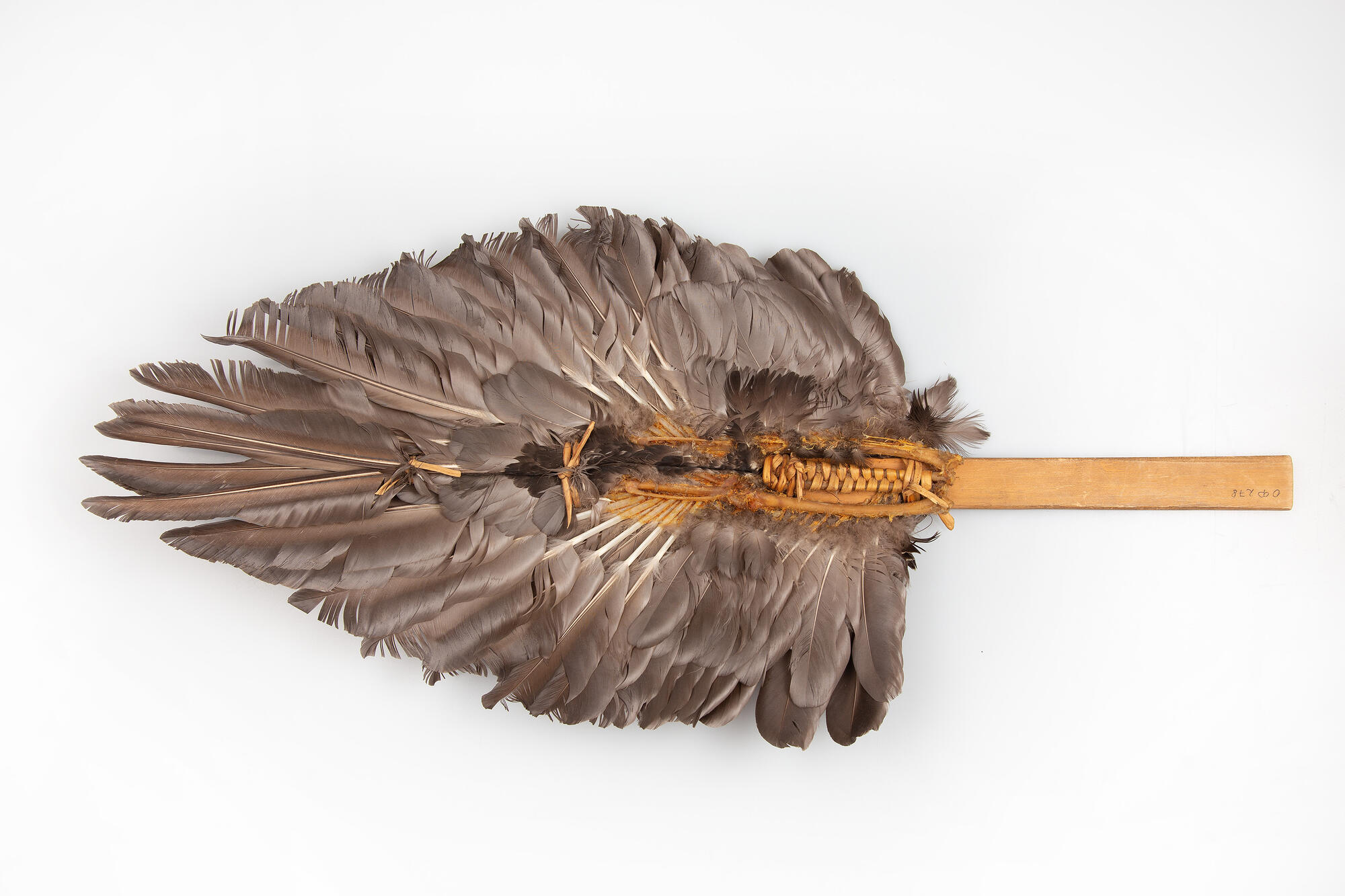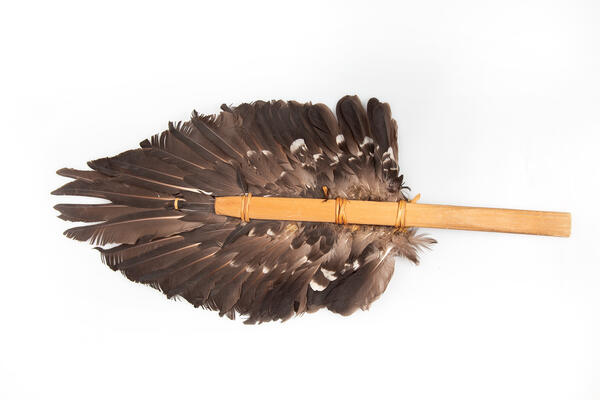A chum is a traditional dwelling of the northern nomadic peoples, which they have been using for thousands of years. The Nenets word “chum” means “hearth”.
Women have always had a central role in the chum. They were the only ones allowed to touch the hearth in the chum, collect and chop wood. Women kindled the fire, talked to it, and predicted the future using the crackle of firewood, smoke, strength and color of the flame. The chum itself, its construction and arrangement were considered women’s work. In the old days, men only threw a bit of snow or earth at the sides of the chum, so that there would be no draft and dust in the dwelling, and they were also responsible for sacred household objects.
The pyramidal shape made the chum resistant to strong winds and blizzards, and the snow slid off the roof. The size of the chum depended on the number of wooden poles that were used as its frame. In winter, the walls were covered with reindeer hides (nyuks), which were cleaned, repaired, cut and handled with care. It took up to 70 deer hides to cover one chum. In summer, the chum was covered with birch bark, but with the advent of modern materials, it was replaced by tarpaulin.
The place that was chosen for the chum depended on the family’s occupation: fishermen stayed on the high banks of the rivers, and reindeer herders were looking for good pastures. The choice of location also depended on the season: in summer, the tent had to be exposed to the winds to ward off annoying insects, and in winter, on the contrary, the chum had to be protected by a dense forest.
A chum was assembled and disassembled in under an hour, there were no unnecessary things in it — everything had a practical purpose. Wardrobes and beds were rare: people slept on reindeer hides and in outerwear. The furniture consisted only of a sacred chest with home idols and a small table: they were easy to transport. To heat a chum, a fire was made right on the ground or snow — the smoke came out through a small hole at the top. It was very smoky from the fire in the tent, and there was additional soot from a tallow candle. Today, a small stove is used to heat the chum.
To keep the chum clean, women used a broom made of loon feathers — two wings of a bird, which were tied together and attached to a wooden handle with a willow vine.
Women have always had a central role in the chum. They were the only ones allowed to touch the hearth in the chum, collect and chop wood. Women kindled the fire, talked to it, and predicted the future using the crackle of firewood, smoke, strength and color of the flame. The chum itself, its construction and arrangement were considered women’s work. In the old days, men only threw a bit of snow or earth at the sides of the chum, so that there would be no draft and dust in the dwelling, and they were also responsible for sacred household objects.
The pyramidal shape made the chum resistant to strong winds and blizzards, and the snow slid off the roof. The size of the chum depended on the number of wooden poles that were used as its frame. In winter, the walls were covered with reindeer hides (nyuks), which were cleaned, repaired, cut and handled with care. It took up to 70 deer hides to cover one chum. In summer, the chum was covered with birch bark, but with the advent of modern materials, it was replaced by tarpaulin.
The place that was chosen for the chum depended on the family’s occupation: fishermen stayed on the high banks of the rivers, and reindeer herders were looking for good pastures. The choice of location also depended on the season: in summer, the tent had to be exposed to the winds to ward off annoying insects, and in winter, on the contrary, the chum had to be protected by a dense forest.
A chum was assembled and disassembled in under an hour, there were no unnecessary things in it — everything had a practical purpose. Wardrobes and beds were rare: people slept on reindeer hides and in outerwear. The furniture consisted only of a sacred chest with home idols and a small table: they were easy to transport. To heat a chum, a fire was made right on the ground or snow — the smoke came out through a small hole at the top. It was very smoky from the fire in the tent, and there was additional soot from a tallow candle. Today, a small stove is used to heat the chum.
To keep the chum clean, women used a broom made of loon feathers — two wings of a bird, which were tied together and attached to a wooden handle with a willow vine.



